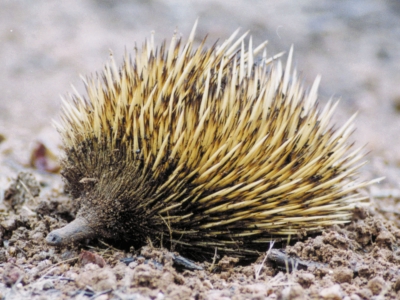
Echidnas may be shy and infrequently seen, but they’re found across most of Australia and hold the title of Australia’s most widespread native mammal.
You can find echidnas slowly wandering around most habitats, from deserts to rainforests and alpine mountains. To survive extremes in weather echidnas burrow into the soil, hide under vegetation and shelter in hollow logs, rock crevices and in burrows created by wombats or rabbits.
Echidnas appear to congregate only during the breeding season, when a female may be followed by a train of suitors. After a gestation period of about 23 days, the female usually lays a single leathery egg into a temporary pouch formed by abdominal muscles and subcutaneous mammary tissue. The egg is incubated for another 10 days before the tiny offspring hatches with the aid of an egg tooth and fleshy bulb (caruncle)—structural holdovers from the creature’s reptilian ancestry. The young echidna is protected in a special nursery burrow, where it sucks milk from special mammary hairs (teats and nipples are absent). When the young echidna is fully covered by spines and fur and is capable of feeding, it leaves the burrow for a solitary life. Echidnas are very long-lived; one echidna was reliably recorded at 45 years of age in the wild, and one captive individual was well over 50 years old at the time of its death.
Picture Credit : Google



